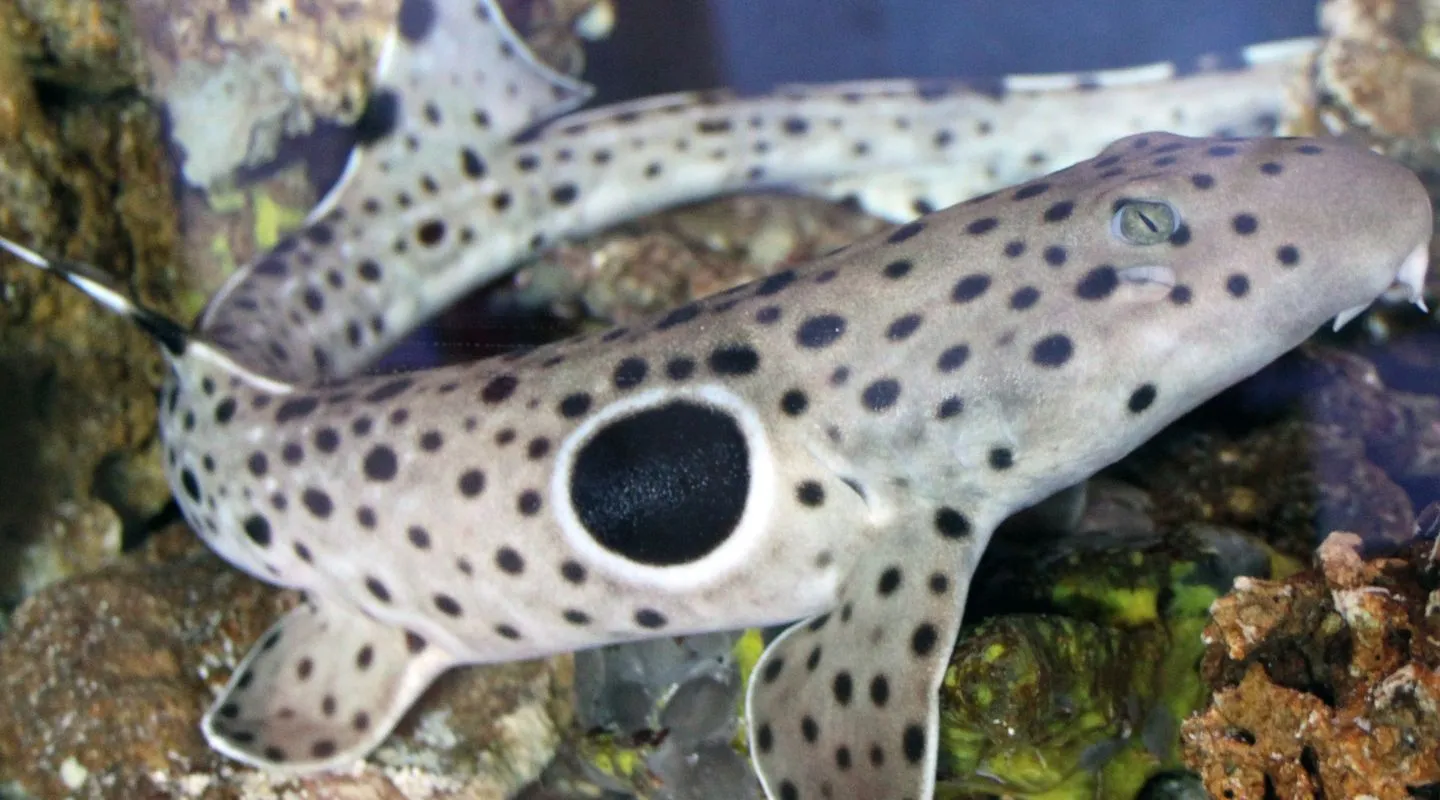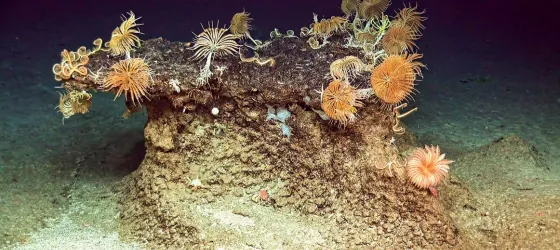It is commonly known as the walking shark as it uses its fins to move around the sea floor.
It can survive for a time in poorly-oxygenated waters such as a pool at low tide; its brain shuts down any non-essential functions.

Sharks

Identity card
Not evaluated
Western Pacific Ocean, in the coral waters of northern Australia and Papua-New Guinea.
The epaulette shark lives mainly in shallow, tropical coastal waters, on coral flats.
It grows up to 1.10 m long.
The epaulette shark feeds on small fish, worms and crustaceans.
The epaulette shark is part of a European conservation program in which Nausicaá participates (Monitoring program).

It is commonly known as the walking shark as it uses its fins to move around the sea floor.
It is commonly known as the walking shark as it uses its fins to move around the sea floor.
It can survive for a time in poorly-oxygenated waters such as a pool at low tide; its brain shuts down any non-essential functions.
Biomimetics: the shark has inspired the creation of some innovative technologies. Its skin has been used as a model for creating antibacterial, hydro/aerodynamic and antifouling clothing; its fins have helped to improve the stability of airplanes thanks to “sharklets” and the shape of its tail has served as inspiration for tidal steam generators.
The epaulette shark lives mainly in shallow, tropical coastal waters, on coral flats.
This shark is also known as the “walking shark” from the way it uses its fins. It can be recognised by the large black spot behind its pectoral fins and the little black dots all over its body. It grows up to 1.10 m long.
The epaulette shark is oviparous. Pouches containing two eggs are laid at night. A pair of eggs can be produced every 14 days. Breeding takes place between July and November, and the eggs are laid from August to December.
Least concern. It is, however, a protected species in the Great Barrier Reef region of Australia.
MANKIND AND SHORES

The Ocean Mag
A la une
Faced with the threat of deep-sea mining, we must join forces to protect the deep seabed!

Article
What lies beneath the surface of the ocean?
Article
Depending on whether they live in open water or on the bottom, fish in the water column have a morphology adapted to their living environment.